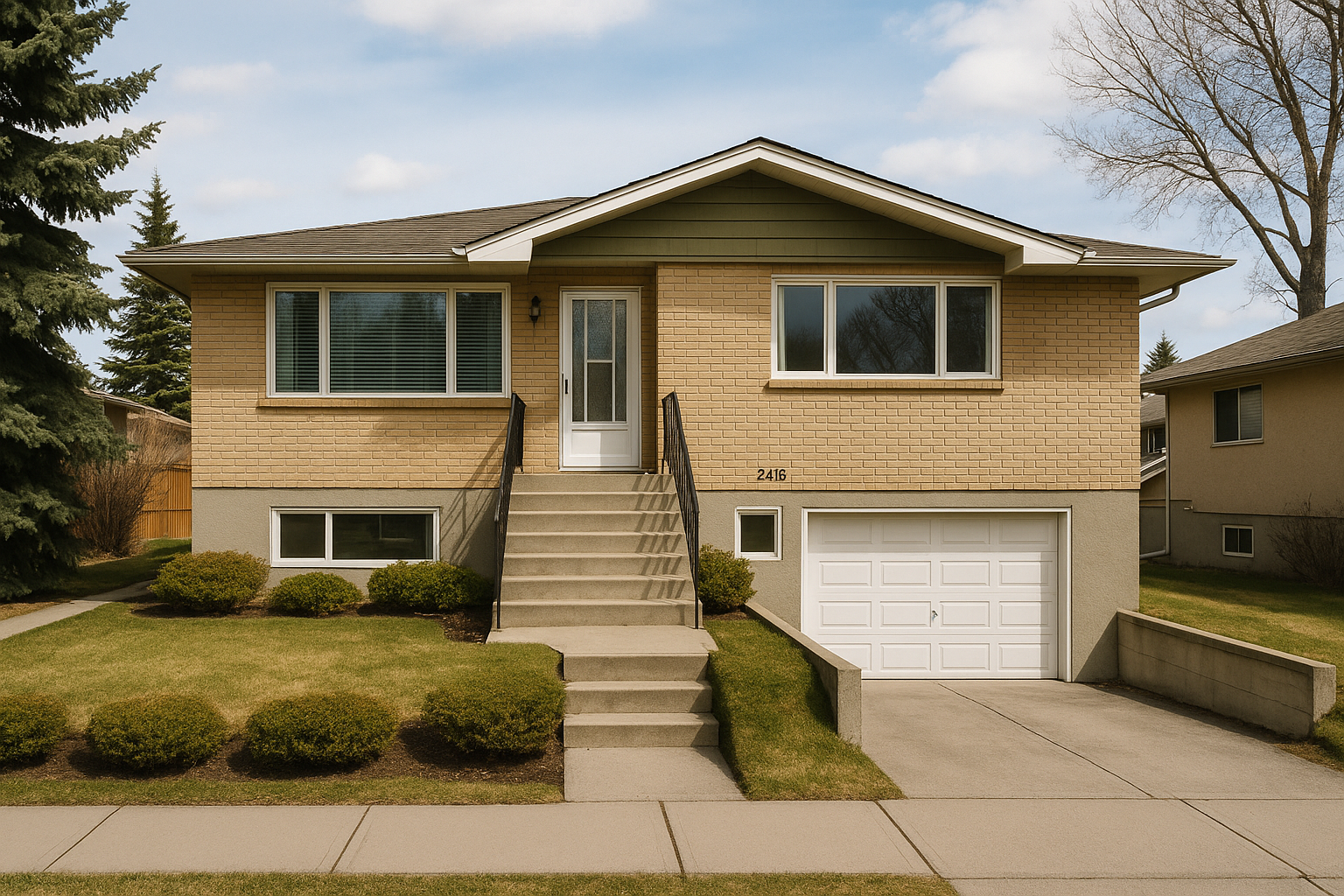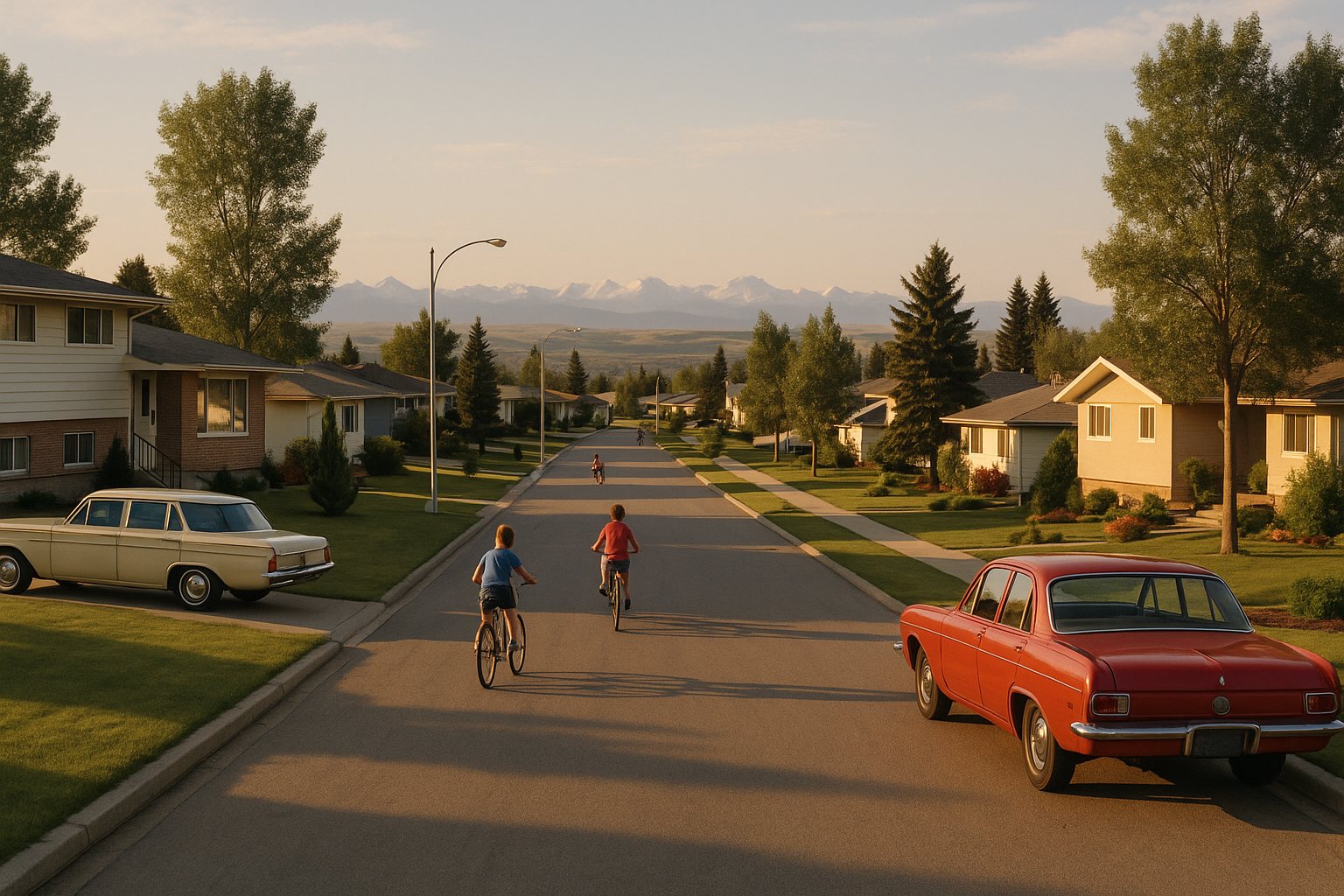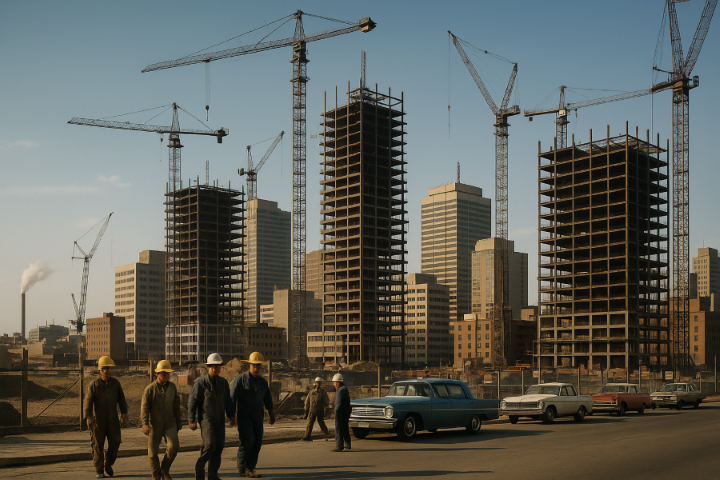Calgary in the 1960s: Oil & Infrastructure Boom
Homes, Communities & Opportunity
The 1960s ushered in a new era for Calgary—one defined by rapid modernization, expanding suburbs, and infrastructure investment. As both a real estate expert and builder, I’m intrigued by how this decade laid the groundwork for today’s growth corridors and commuter-friendly communities. From new highways to civic projects, the ‘60s reshaped Calgary—and created lasting opportunities in the housing market.
Economic & Population Growth
Another wave of growth: Calgary’s population rose approximately 50% from 1960 to 1970, driven by the continued oil boom and economic diversification.
Infrastructure investment: Major projects like the Trans-Canada and Queen Elizabeth II Highways, plus the construction of municipal utilities, fueled suburban development.
Emerging Suburban Neighbourhoods
Dalhousie (est. early '60s): This community near North Hill expanded rapidly, with split-levels and  post-war bungalows on family-sized lots.
post-war bungalows on family-sized lots.
Marlborough & Marlborough Park: Designed as master-planned neighbourhoods with schools, shopping, and green space—classic 1960s satellite development.
Acadia: The southeast suburb of Acadia filled out with larger homes on generous lots along the corridors of Heritage and Redelmeier drives.
Huntington Hills & Bowness expansion: Suburbs like Huntington added new branching sections; Bowness continued to mature with suburban infill around its historic core.
Architectural Trends
Split-levels and raised bungalows became design staples—popular in neighbourhoods like Dalhousie and Huntington Hills.
Post-and-beam Mid-Century Modern entered the scene with clean lines and open plans—particularly in custom homes in upper-end suburbs.
Bungalows evolved: Many original 1950s bungalows were modestly upgraded with carports, family rooms, and second bathrooms—reflecting growing household expectations.
Lifestyle & Community Anchors
Shopping malls:
Sunridge Mall (opened 1969) became a regional shopping hub—anchoring the east and transforming the way Calgarians shopped.
Drive-thru dining continued to flourish: Spots like White Spot and regional chains served suburban families on the go.
Civic expansion:
Schools, recreation centres, and local pools became essential to each new development—Acadia famed for its indoor rink, Marlborough Park for its library and park network.
A&W Canada (Founded in 1956, but grew significantly in the 1960s)
A&W began in the 1950s, but it was in the 1960s when the brand really took off across Canada. The Calgary location played a key role in introducing the famous root beer and drive-thru concept to the local community. Today, A&W is one of Canada’s top fast-food chains, known for its burgers and signature root beer.
The Palliser Hotel (Opened in 1914, but renovations in the 1960s solidified its historical significance)
Although The Palliser Hotel is older, its importance as a major Calgary landmark grew significantly during the 1960s with major renovations. It remains a key example of luxury hospitality in Calgary, often serving as a base for many prominent visitors to the city.
The Calgary Stampede (Continued to grow during the 1960s)
Founded in 1886, the Calgary Stampede’s growth in the 1960s solidified its status as a world-famous event. The Stampede's expansion during this time helped shape Calgary’s reputation as "The Greatest Outdoor Show on Earth," attracting more tourists and becoming a key part of the city’s identity.
CBC Calgary (Became a major regional station in the 1960s)
Though CBC (Canadian Broadcasting Corporation) has been around since 1936, its Calgary station played an increasingly prominent role in the 1960s in bringing news, entertainment, and local programming to the region. It's still one of the major media players in Alberta today.
The Keg Steakhouse + Bar (Founded in 1971, but the 1960s laid the groundwork for the dining culture)
The Keg began in the early '70s but was influenced by the growing popularity of casual dining that started in the 1960s, as people began to seek out quality steakhouse experiences at more affordable prices. It has since become a household name in Canadian dining.
Other Businesses and Trends from the 1960s:
Shopping Malls: The 1960s was when the mall culture started taking off in Calgary, with significant development of shopping centers like Southcentre Mall (opened in 1964)
Restaurants and Diners: The 1960s was also a time when fast food chains and casual diners became more popular, with businesses like Harvey's and Swiss Chalet laying roots for the future.
Real Estate & Investment: Then & Now
Suburban “Garden Cities”: Master-planned communities like Marlborough offered turnkey living  experiences, appealing to young families seeking easy access to green space and schools.
experiences, appealing to young families seeking easy access to green space and schools.
Commuter convenience: Proximity to new highways made these areas attractive—and they remain strong resale sectors today.
Infill potential: Inner-city suburbs from the '50s, like Charleswood, began seeing teardowns and replacements in the '60s; these corridors remain ripe for infill investment.
Home Prices & Affordability Snapshot
National context: In 1965, the average Canadian home cost around $17,000–$18,000.
Local examples: Split-level in Dalhousie sold for $25K–30K by late '60s.
Larger Calgary bungalows ran $20K–25K depending on lot size and locale.
Financing trends: Mortgages moved to 25–30 year terms, and down payments hovered around 10%. Interest rates were moderate at 6–7%, keeping monthly payments affordable for middle-income families.
Case Study: Marlborough Split-Level
A family bought a 1,400 sq ft. split-level in Marlborough in 1968 for $28,000 using a 25‑year mortgage and $2,800 down. Fast forward to today: that same house, updated with modern kitchens and curated outdoor spaces, now fetches $550,000–$650,000—a strong example of decades-long equity growth.
Why This Matters Now
High-growth corridors: Communities established in the '60s—like Marlborough and Acadia—are now mature, with steady resale activity and appeal to first-time buyers priced out of inner-city homes.
Lifestyle continuity: These neighbourhoods still deliver on the amenities they promised: schools, parks, shopping, and easy commuting.
Renovation vs. resale: Many of these original homes are ripe for renovation or infill—offering value-add opportunities similar to those in 1950s bungalows.
Visual Insights
Picture a raised ranch with broad windows, cedar detailing, and split-level living—all nestled next to green spaces and playgrounds. These homes dotted Calgary’s expanding edges then—and today, they offer the canvas for smart updates or strategic redevelopment.
In Summary
| Metric | 1960s Insight | Today’s Market |
|---|---|---|
| Home price mid‑1960s | ~$25,000 for 1,200–1,400 sq ft. split-level | $550K–$650K—~6–7% annual appreciation |
| Mortgage terms | 25–30 years, ~10% down | Renovation or equity refinancing options |
| Popular Suburbs | Dalhousie, Marlborough, Acadia | Continued family demand, resale activity |
| Investment takeaway | Community land + infrastructure = equity | Homes built in '60s still yield value with upgrades |
These value drivers—community planning + strong foundations—still hold true. For buyers seeking walkable amenities and established schools, or investors targeting renovation potential, the 1960s suburbs remain a compelling opportunity.
Calgary's Transition
The 1960s were more than another decade of growth—they signaled Calgary’s transition into a modern city with deliberate infrastructure and suburban design. Those choices continue to shape market demand and future potential.
Curious about renovating a 1960s gem, or exploring infill opportunities? Reach out—I’m here to help.
Follow me on Instagram @DuskoSremac_REPYYC
What’s Next?
Stay tuned for: “Calgary in the 1970s: Urban Sprawl, Energy Shocks & Civic Transformation”

Dusko Sremac – Calgary REALTOR®
With deep roots in Calgary real estate and construction, Dusko Sremac’s expertise on 1960s-era homes and infrastructure growth corridors offers clients unique insight into where value still lives today.
From raised bungalows in Marlborough to split-levels in Dalhousie, Dusko helps buyers and investors understand the long-term equity potential of mid-century properties. His understanding of historical build quality, zoning shifts, and modern renovation trends makes him a go-to expert for navigating Calgary’s mature suburban markets.
Cell: 403-988-0033 | Email: dusko@repyyc.com


Leave A Comment